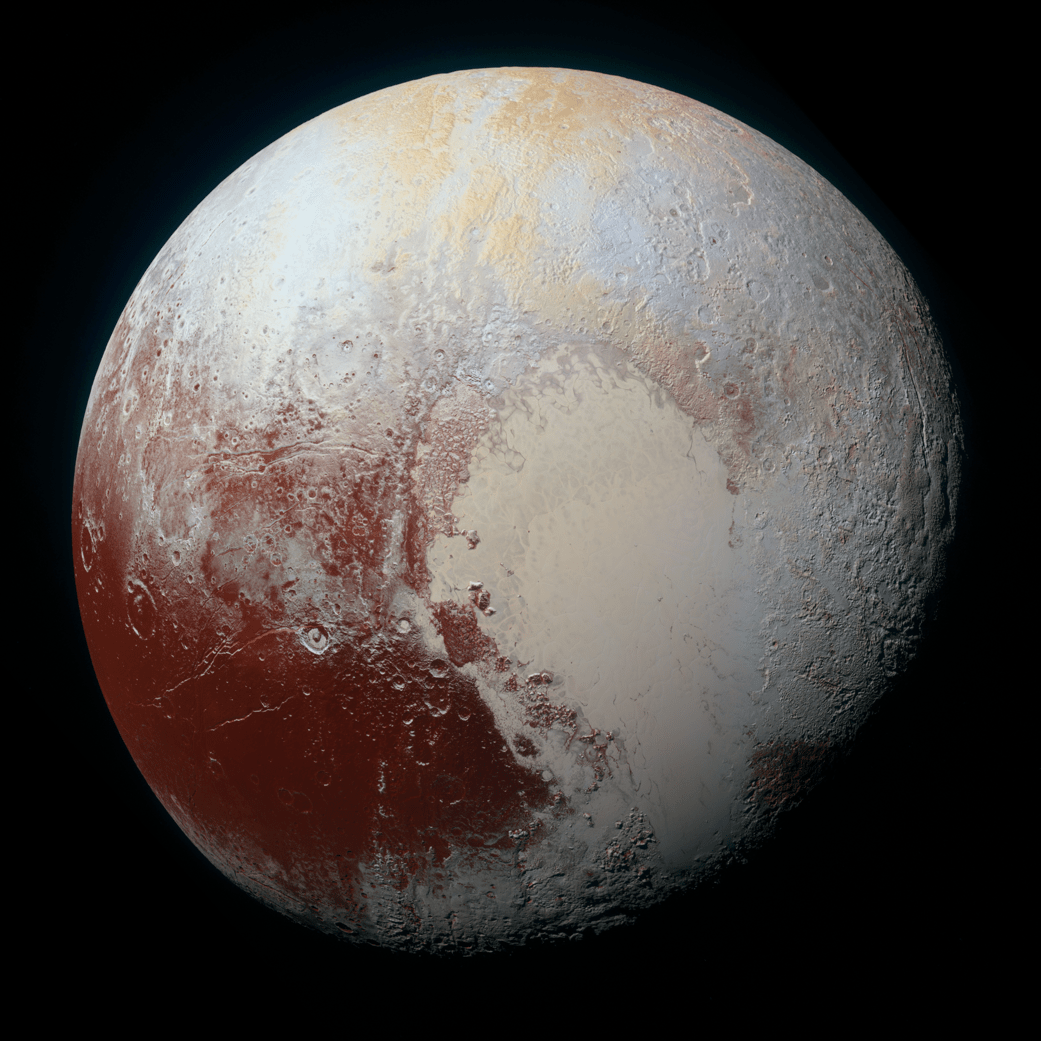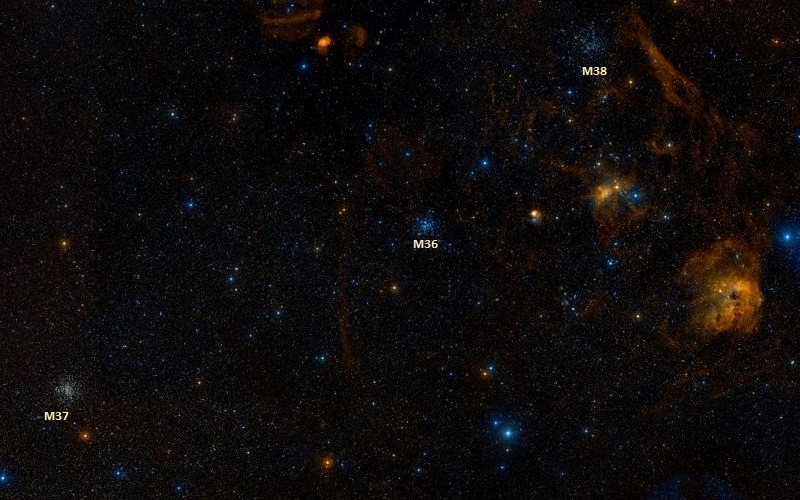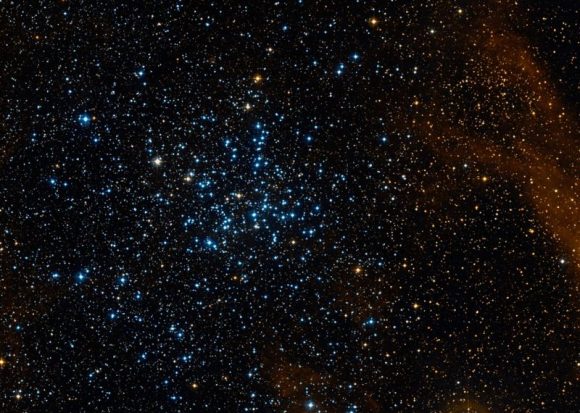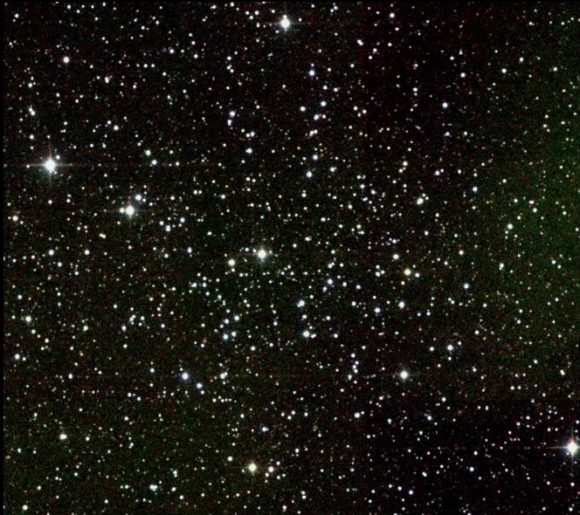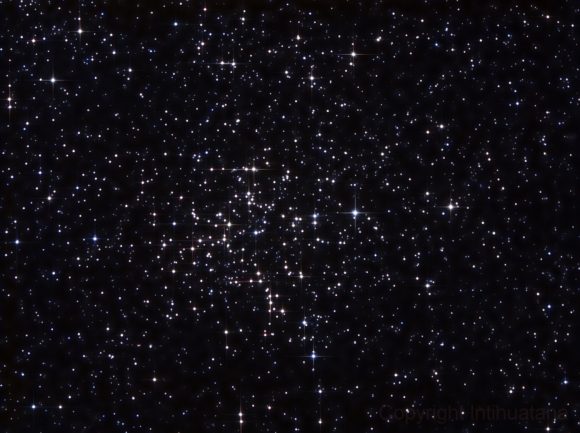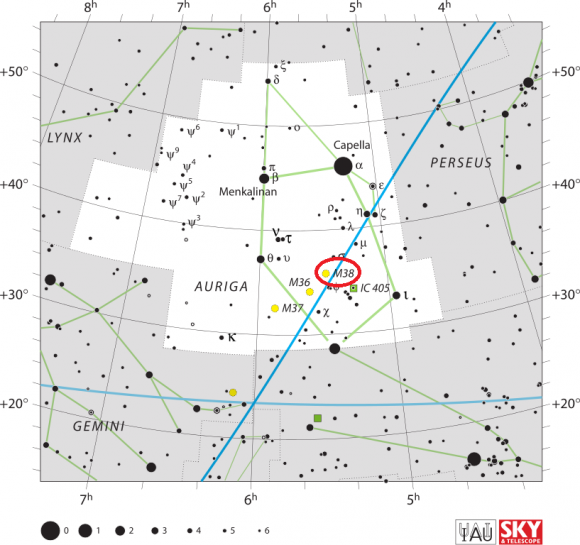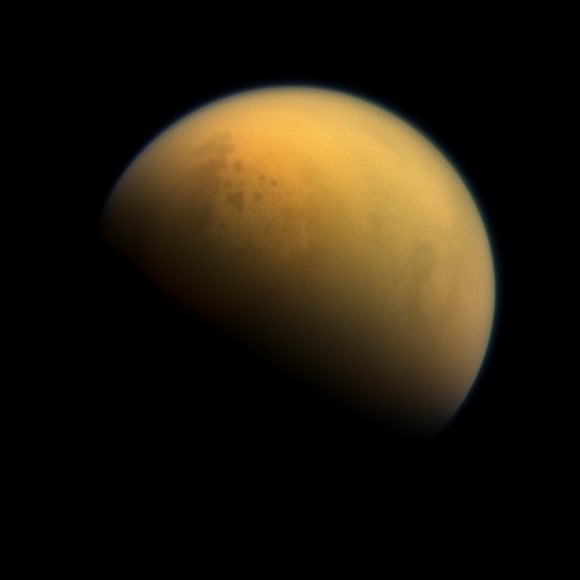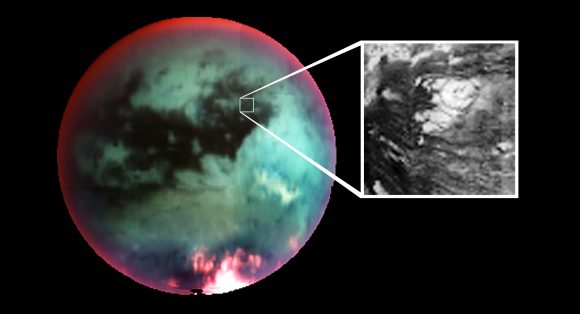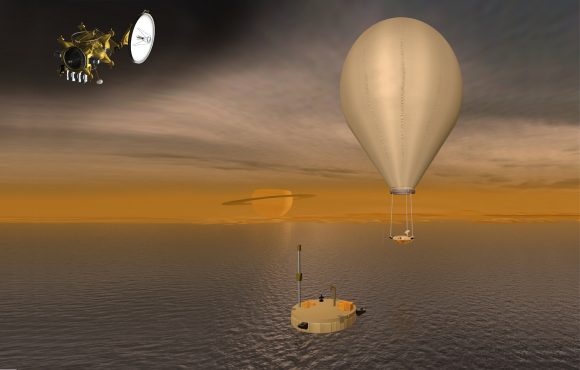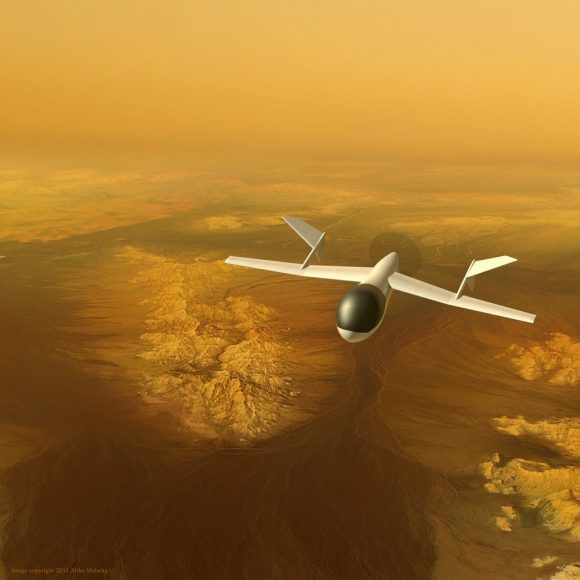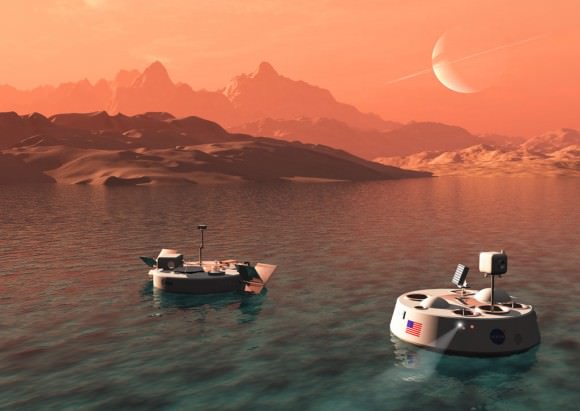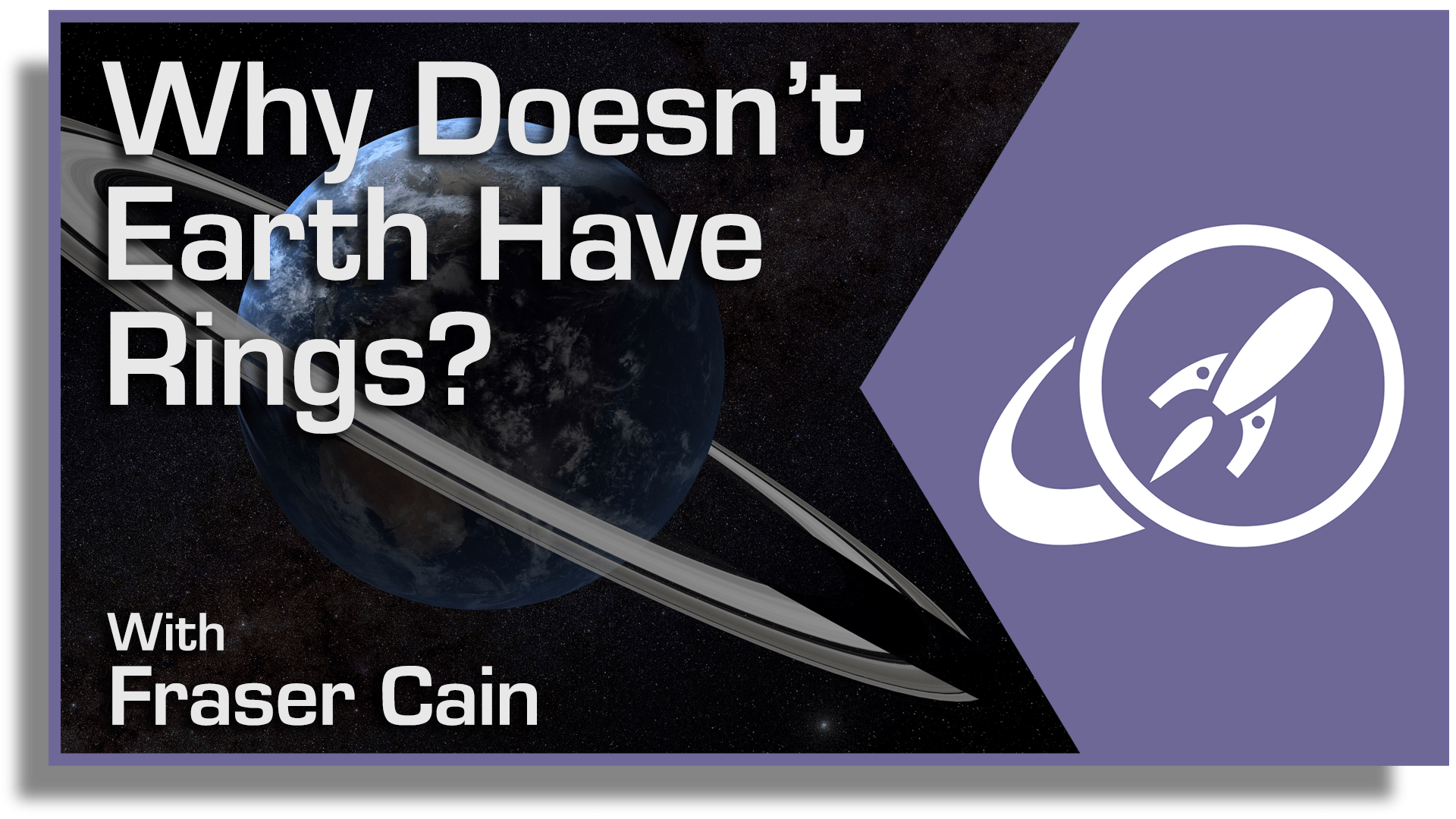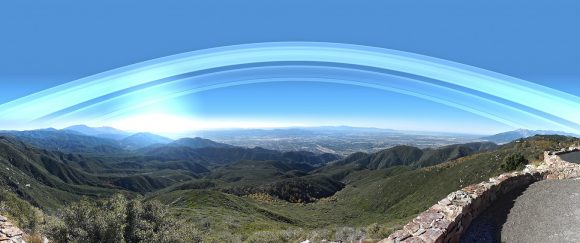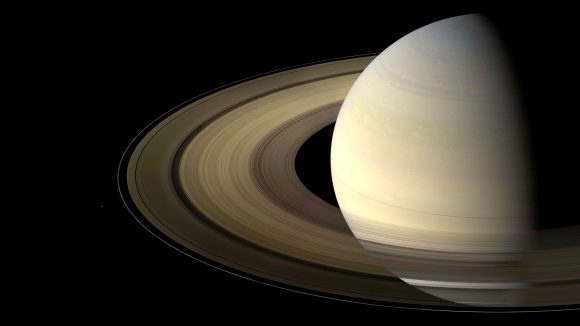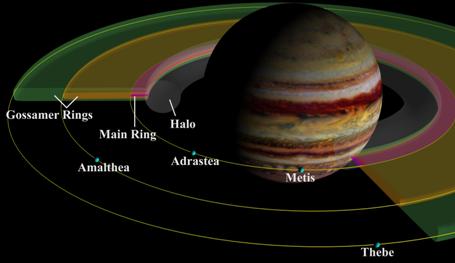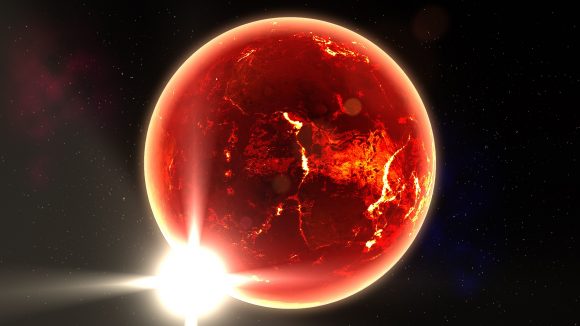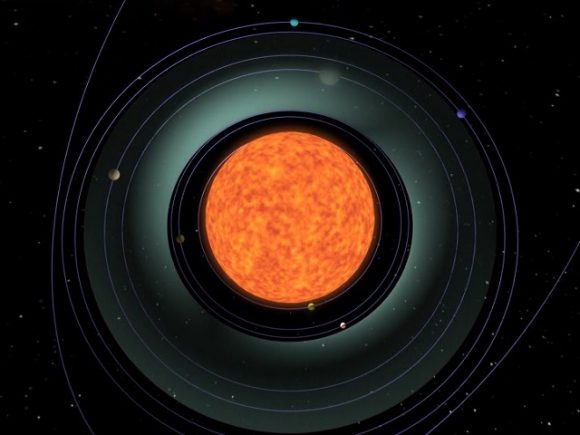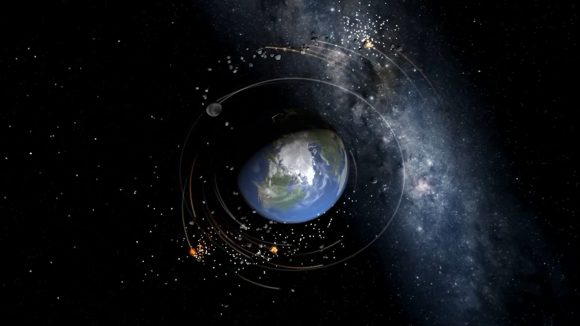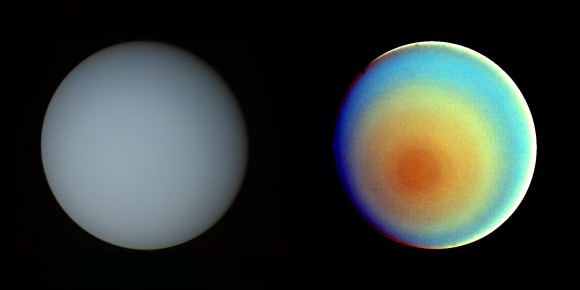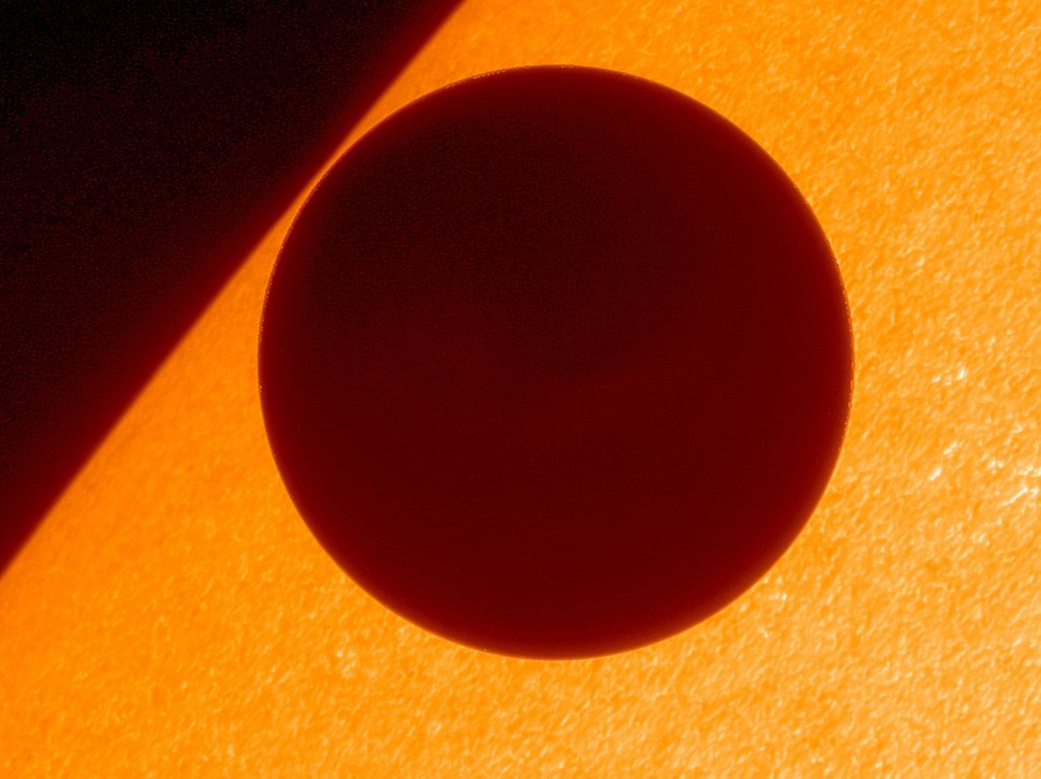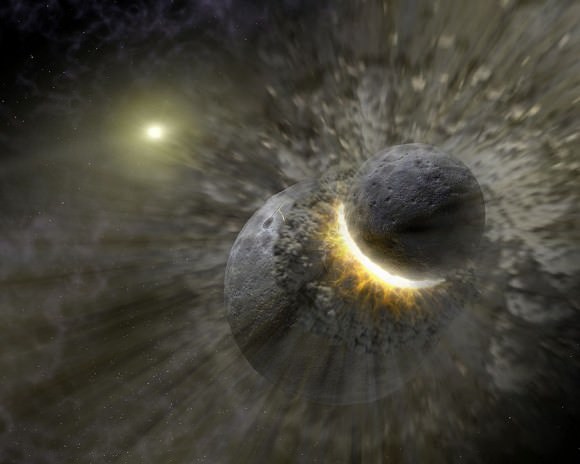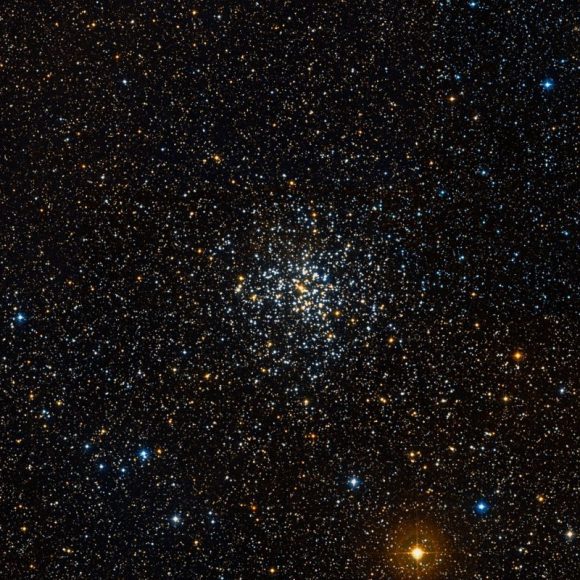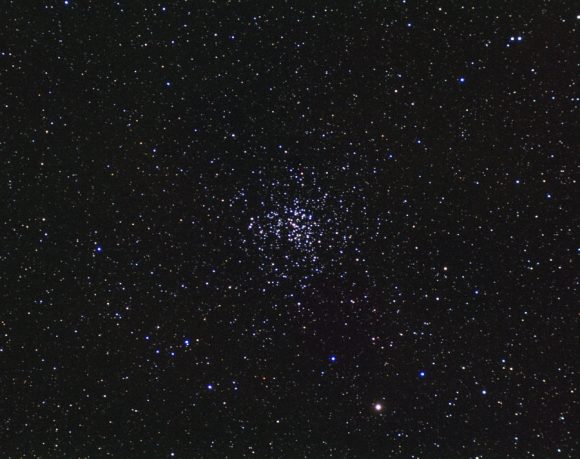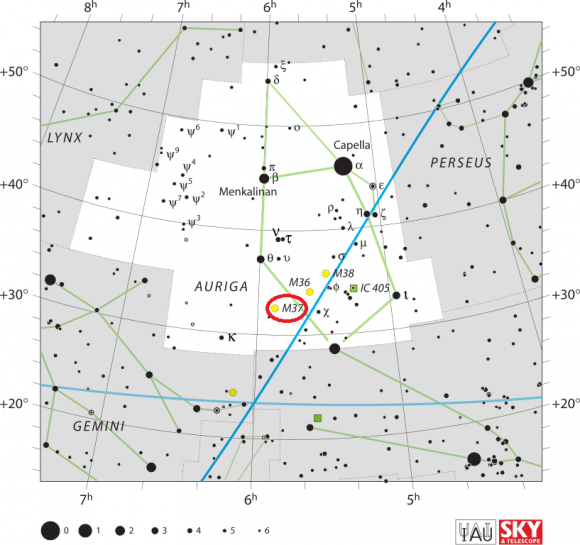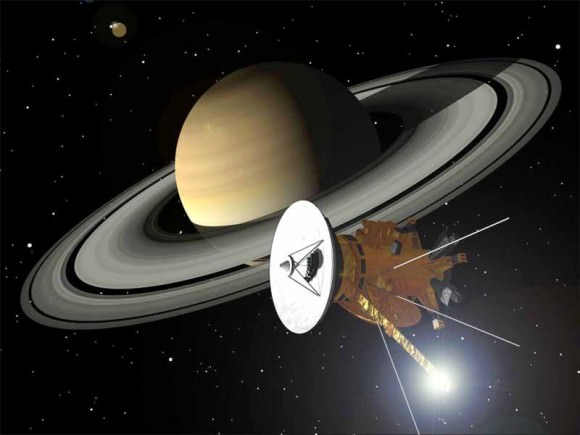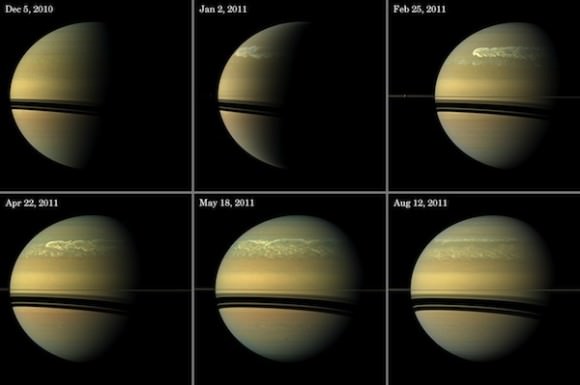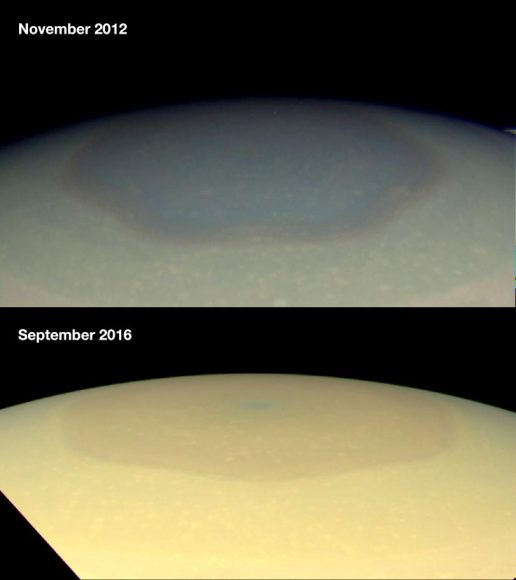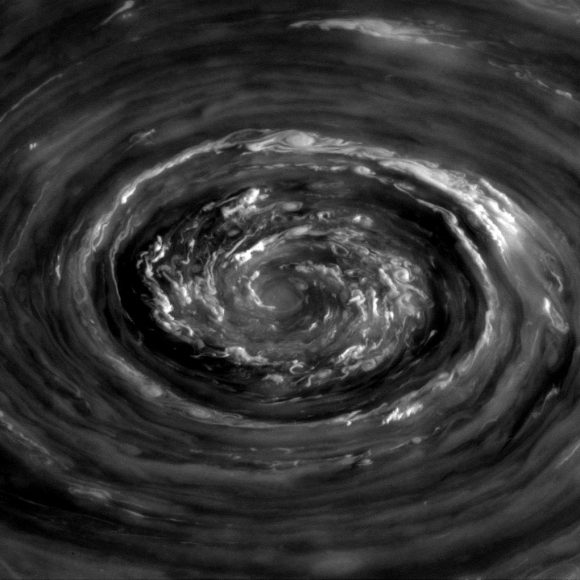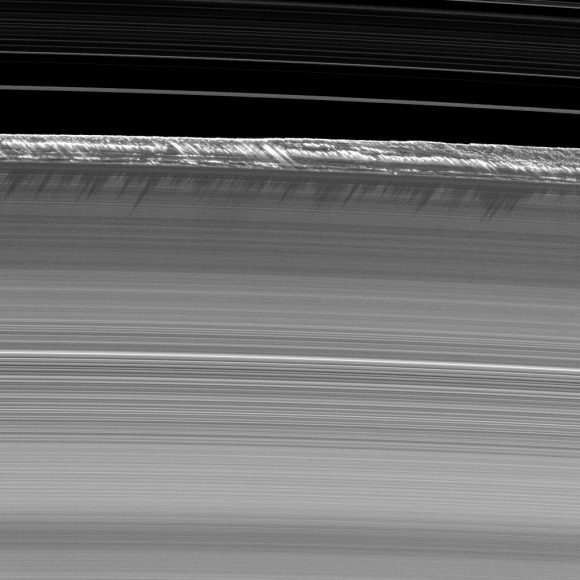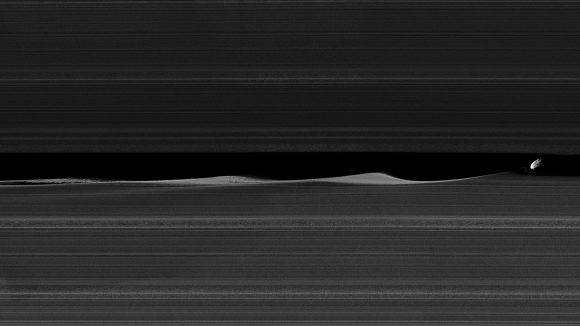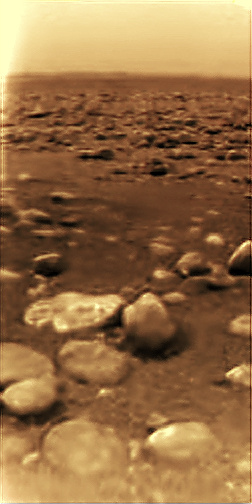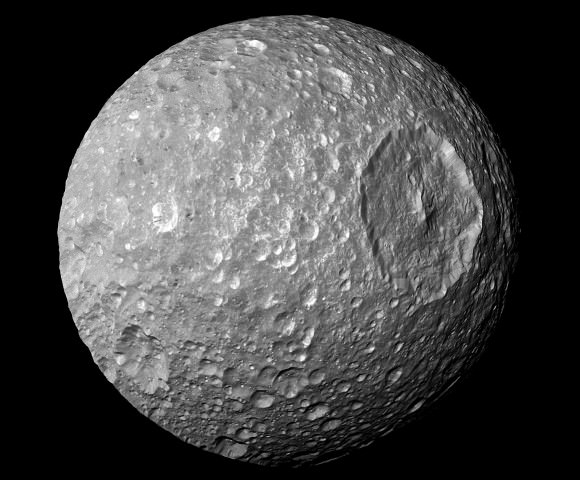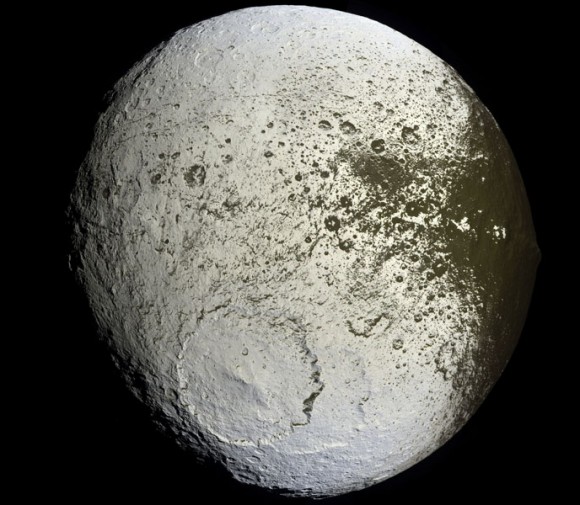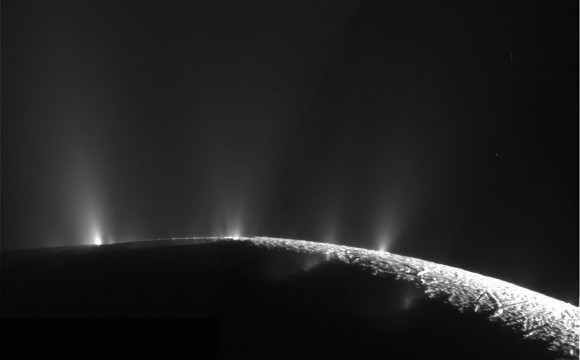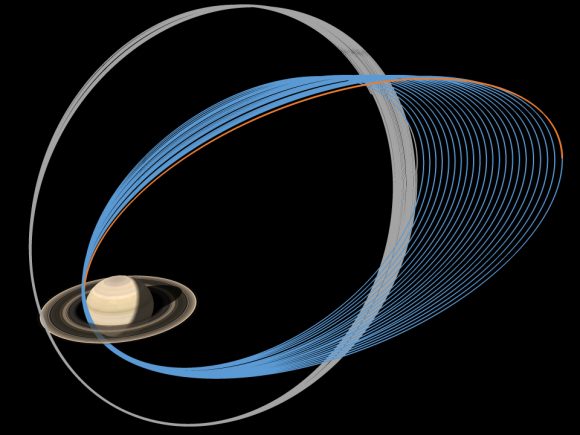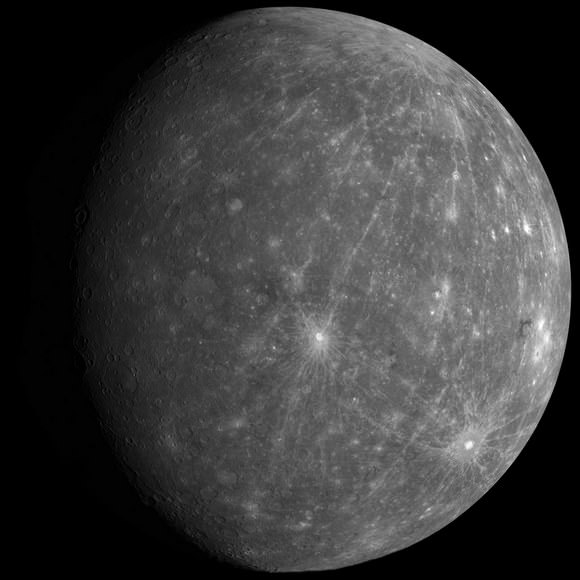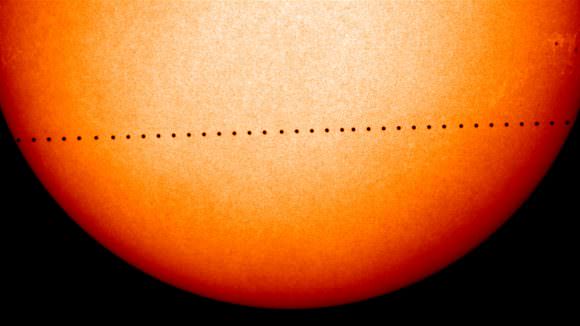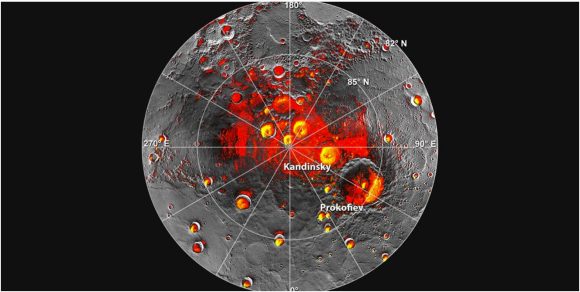When Pluto was first discovered by Clybe Tombaugh in 1930, astronomers believed that they had found the ninth and outermost planet of the Solar System. In the decades that followed, what little we were able to learn about this distant world was the product of surveys conducted using Earth-based telescopes. Throughout this period, astronomers believed that Pluto was a dirty brown color.
In recent years, thanks to improved observations and the New Horizons mission, we have finally managed to obtain a clear picture of what Pluto looks like. In addition to information about its surface features, composition and tenuous atmosphere, much has been learned about Pluto’s appearance. Because of this, we now know that the one-time “ninth planet” of the Solar System is rich and varied in color.
Composition:
With a mean density of 1.87 g/cm3, Pluto’s composition is differentiated between an icy mantle and a rocky core. The surface is composed of more than 98% nitrogen ice, with traces of methane and carbon monoxide. Scientists also suspect that Pluto’s internal structure is differentiated, with the rocky material having settled into a dense core surrounded by a mantle of water ice.
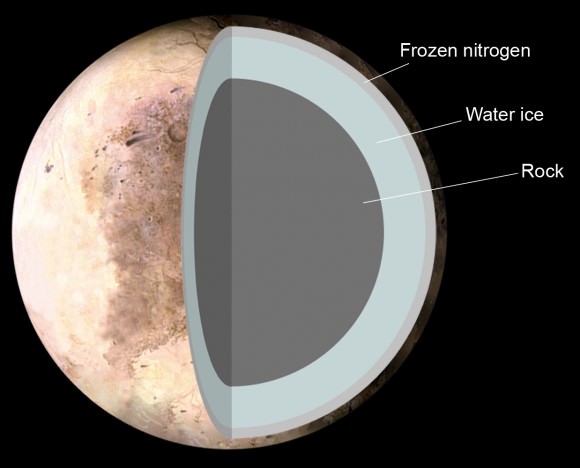
The diameter of the core is believed to be approximately 1700 km, which accounts for 70% of Pluto’s total diameter. Thanks to the decay of radioactive elements, it is possible that Pluto contains a subsurface ocean layer that is 100 to 180 km thick at the core–mantle boundary.
Pluto has a thin atmosphere consisting of nitrogen (N2), methane (CH4), and carbon monoxide (CO), which are in equilibrium with their ices on Pluto’s surface. However, the planet is so cold that during part of its orbit, the atmosphere congeals and falls to the surface. The average surface temperature is 44 K (-229 °C), ranging from 33 K (-240 °C) at aphelion to 55 K (-218 °C) at perihelion.
Appearance:
Pluto’s surface is very varied, with large differences in both brightness and color. Pluto’s surface also shows signs of heavy cratering, with ones on the dayside measuring 260 km (162 mi) in diameter. Tectonic features including scarps and troughs has also been seen in some areas, some as long as 600 km (370 miles).
Mountains have also been seen that are between 2 to 3 kilometers (6500 – 9800 ft) in elevation above their surroundings. Like much of the surface, these features are believed to be composed primarily of frozen nitrogen, carbon monoxide, and methane, which are believed to sit atop a “bedrock” of frozen water ice.
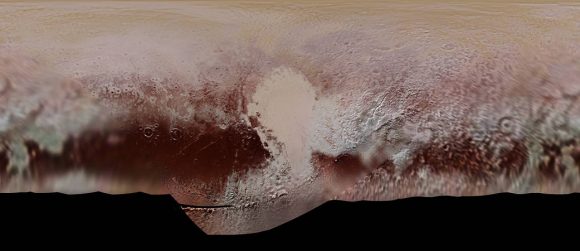
The surface also has many dark, reddish patches due to the presence of tholins, which are created by charged particles from the Sun interacting with mixtures of methane and nitrogen. Pluto’s visual apparent magnitude averages 15.1, brightening to 13.65 at perihelion. In other words, the planet has a range of colors, including pale sections of off-white and light blue, to streaks of yellow and subtle orange, to large patches of deep red.
Overall, its appearance could be described as “ruddy”, given that the combination can lend it a somewhat brown and earthy appearance from a distance. In fact, prior to the New Horizon‘s mission, which provided the first high-resolution, close-up images of the planet, this is precisely what astronomers believed Pluto looked like.
Major Surface Features:
Several different regions (“regio”) have been characterized based on the notable features they possess. Perhaps the best known is the large, pale area nicknamed the “Heart” – aka. Tombaugh Regio (named after Pluto’s founder). This large bright area is located on the side of Pluto that lies opposite the side that faces Charon, and is named because of its distinctive shape.
Tombaugh Regio is about 1,590 km (990 mi) across and contains 3,400 m (11,000 ft) mountains made of water ice along its southwestern edge. The lack of craters suggests that its surface is relatively young (about 100 million years old) and hints at Pluto being geologically active. The Heart can be subdivided into two lobes, which are distinct geological features that are both bright in appearance.
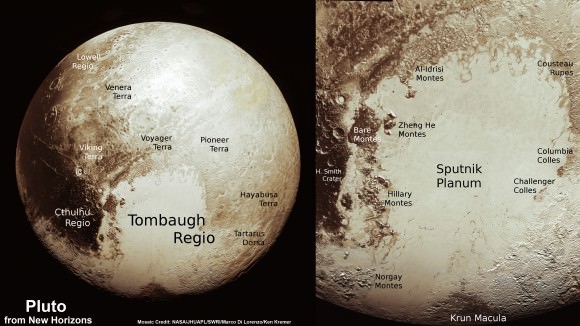
The western lobe, Sputnik Planitia, is vast plain of nitrogen and carbon monoxide ices measuring 1000 km in width. It is divided into polygonal sections that are believed to be convection cells, which carry blocks of water ice and sublimation pits along towards the edge of the plain. This region is especially young (less than 10 million years old), which is indicated by its lack of cratering.
Then there is the large, dark area on the trailing hemisphere known as Cthulhu Regio (aka.the “Whale”). Named for its distinctive shape, this elongated, dark region along the equator is the largest dark feature on Pluto – measuring 2,990 km (1,860 mi) in length. The dark color is believed to be the result methane and nitrogen in the atmosphere interacting with ultraviolet light and cosmic rays, creating the dark particles (“tholins”) common to Pluto.
And then there are the “Brass Knuckles”, a series of equatorial dark areas on the leading hemisphere. These features average around 480 km (300 mi) in diameter, and are located along the equator between the Heart and the tail of the Whale.
New Horizons Mission:
The NH mission launched from Cape Canaveral Air Force Station in Florida on January 19th, 2006. After swinging by Jupiter for a gravity boost and to conduct some scientific studies in February of 2007, it reached Pluto in the summer of 2015. Once there, it conducted a six month-long reconnaissance flyby of Pluto and its system of moons, culminating with a closest approach that occurred on July 14th, 2015.
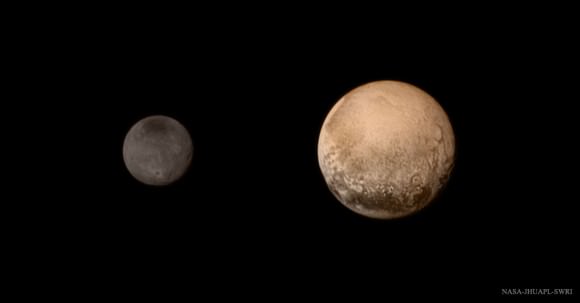
The first images of Pluto acquired by NH were taken on September 21st to 24th, 2006, during a test of the Long Range Reconnaissance Imager (LORRI). At the time, the probe was still at a distance of approximately 4.2 billion km (2.6 billion mi) or 28 AU, and the photos were released on November 28th, 2006. Between July 1st and 3rd, the first images were taken that were able to resolved Pluto and its largest moon, Charon, as separate objects.
Between July 19th–24th, 2014, the probe snapped 12 images of Charon revolving around Pluto, covering almost one full rotation at distances ranging from 429 to 422 million kilometers (267,000,000 to 262,000,000 mi). After a brief hibernation during its final approach, New Horizons “woke up” on Dec. 7th, 2014. Distant-encounter operations began on January 4th, 2015, and NH began taking images of Pluto as it grew closer.
During its closest approach (July 14th, 2015, at at 11:50 UTC), the NH probe passed within 12,500 km (7,800 mi) of Pluto. About 3 days before making its closest approach, long-range imaging of Pluto and Charon took place that were 40 km (25 mi) in resolution, which allowed for all sides of both bodies to be mapped out.
Close-range imaging also took place twice a day during this time to search for any indication of surface changes. The NH probe also analyzed Pluto’s atmosphere using its suite of scientific instruments. This included it’s ultraviolet imaging spectrometer (aka. Alice) and the Radio Science EXperiment (REX), which analyzed the composition and structure of Pluto’s atmosphere.
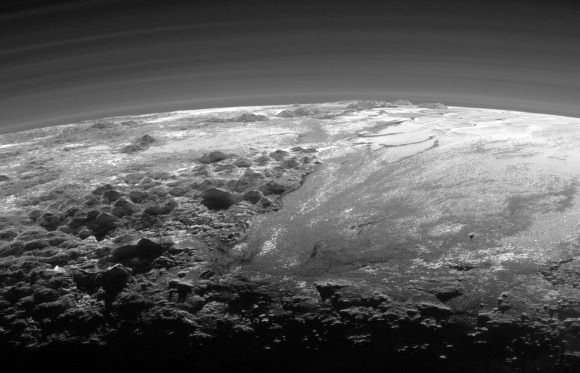
It’s Solar Wind Around Pluto (SWAP) and Pluto Energetic Particle Spectrometer Science Investigation (PEPSSI) examined the interaction of Pluto’s high atmosphere with solar wind. Pluto’s diameter was also resolved by measuring the disappearance and reappearance of the radio occultation signal as the probe flew by behind Pluto. And the gravitational tug on the probe were used to determine Pluto’s mass and mass distribution.
All of this information has helped astronomers to make the first detailed maps of Pluto, and led to numerous discoveries about Pluto’s structure, composition, and the kinds of forces that actively shape its surface. The mission also led to the first true images of what Pluto looks like up close, revealing its true colors, it’s famous “Heart” region, and the many other now-famous features.
We have written many interesting articles about the colors of astronomical bodies here at Universe Today. Here’s What Color is the Sun?, What are the Colors of the Planets?, What Color is Mercury?, What Color is Venus?, What Color is the Moon?, Why is Mars Red?, What Color is Jupiter?, What Color is Saturn?, What Color is Uranus?, and What Color is Neptune?
Sources:

